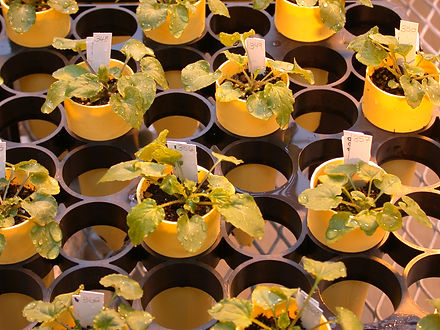
Laura Galloway
Commonwealth Professor of Biology

Current projects in the Galloway lab focus on understanding evolution in response to past climate warming, the early stages of speciation, and variation in plant reproduction across a species’ range. Most of our projects use Campanula americana (American bellflower) as a study system. We combine molecular genetic analysis, quantitative genetics, and ecological genetics in both lab/greenhouse and field studies in our work.
One set of projects uses historical context to study the evolutionary response to climate warming. During the last glacial period, most temperature species moved to southern latitudes or lower elevations. After the glaciers receded, plants and animals expanded their ranges, tracking reappearance of suitable habitats. Rear-edge populations remained behind, with many still occupying areas they inhabited during the glaciation and thus occur at species’ warmer range limits. As such, they form natural laboratories to study the evolutionary outcomes of climate warming. Rear-edge populations are predicted to have high levels of genetic diversity and differentiation, elevated genetic drift and genetic load, and strong local adaptation. We are evaluating these predictions in American bellflower and have found strong local adaptation, including novel phenotypes, that allow populations to thrive in habitats that are unsuitably warm for populations from other parts of the range.
A second set of projects explores incipient speciation. We found substantial reproductive isolation between C. americana populations, with up to 90% reduction in fitness of between-population crosses relative to those within populations! Reproductive isolation is largely limited to crosses between clades and is due to incompatibility between chloroplast and nuclear genes. Interestingly, the chloroplast genome evolves fairly rapidly in C. americana and, in contrast with most other taxa, chloroplasts may be inherited maternally, paternally or from both parents. C. americana is an autotetraploid and polyploidy has been implicated in changing the rate of reproductive isolation. Finally, we are investigating whether reproductive isolation is enhanced or reduced at contact zones between incompatible populations with the goal of understanding the earliest stages of speciation.
Click a figure below for more information about recent publications.



